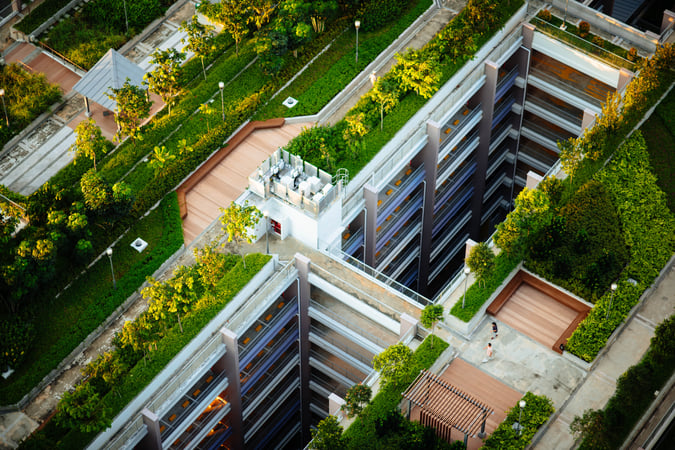What is regenerative architecture? Simply put, it’s a system-oriented, process-oriented approach to architecture that improves environmental health, reduces pollution, and fosters social cohesion. The most common elements of this type of architecture are net-zero energy usage, regenerative design, and zero-waste construction. This type of architecture is the holy grail of sustainable buildings. Among its many benefits, Regenerative architecture Melbourne provides onsite support for all needs.
Regenerative architecture improves the health of the environment
Regenerative design is an approach to building and development that mimics nature, restoring its natural resources while connecting humans with nature. This approach to building and development yields net-positive impacts for ecology and society. The principles behind regenerative design are simple: build projects with minimum impact on the environment and community, and reduce their negative impact by minimizing energy and water use. To understand the process of regenerative design, consider the following case studies.

Regenerative developments can help mitigate climate change and biodiversity loss by performing small aspects of ecosystem functions. These improvements improve both human health and the health of the environment. They can also contribute to reducing waste and ensuring the health of the local ecosystem. Achieving this requires changing the current construction practices. Regenerative development also incorporates community inputs, resulting in a healthier built environment. The following are some examples of regenerative architecture.
It reduces pollution
Regenerative architecture is a design philosophy aimed at repairing and restoring the environment through construction. It involves conceiving buildings that produce their own energy, treat their own water, and produce net-positive impacts on the environment. The concept of regenerative architecture has received much attention in recent years, especially with the creation of contests such as Redesign the World that encourage designers to envision radical solutions to end environmental problems through built communities. A few architects have already begun bringing regenerative design principles to life in their own designs.
Regenerative architecture began in the post-industrial age with the construction of post-war buildings. Its use in the post-war era was greatly enhanced by its adoption in post-industrial settings. The ideas about the use of natural resources and innovative design influenced the development of sustainable buildings worldwide. Today, many buildings are designed in a sustainable manner and can have a negative impact on the environment.
It promotes social cohesion
The quality of public buildings and public spaces has a direct impact on social interactions, so attention to the design of public space is crucial to promoting social cohesion. Likewise, the design of urban parks and green spaces influences the relationship between green space and social cohesion. This study highlights the importance of taking into account the design of public spaces when considering regenerative architecture. It shows that architecture can promote social cohesion through a synthesis of context, program, and research.
It requires a process-oriented whole systems approach to design
Regenerative architecture involves a holistic, process-oriented approach to design and construction. Regenerative design focuses on processes that restore, revitalize, and replenish the natural world. It is data-driven, system-oriented, and holistic, which means it considers all systems, including human health and the environment. It is an alternative to sustainable design, which focuses on minimizing negative operational impacts and increasing the quality of life for both people and the planet.
Regenerative design combines biophilia and regenerative design principles. As the natural world changes and adapts, buildings must, too. To meet these demands, buildings must be designed to adapt to changing climate, environment, and human needs. Building features open-span glulam timber framing and transparent mechanical and electrical systems. These systems enable the building’s occupants to easily repurpose the space and increase its utility.
It is in its early stages of development
Regenerative approaches seek to reverse the degradation of earth’s natural systems and develop human systems that are co-evolved with them. Such co-evolvement can produce mutual benefits, a richer expression of life, and a win-win situation. This approach has many roots, including regenerative design and development. Here are three major areas where regenerative development is already in its early stages of development:
Regenerative architecture addresses a fundamental challenge to existing green building practices. Most of the existing building environmental assessment methodologies originated in mainstream practices and have been incremental in nature. The post-second world war period, in which environmental values first emerged, was turbulent. Architects began to respond in a more significant way. The environmental movement emerged, signaling a growing awareness of environmental values. Those who took up regenerative architecture were preparing for a future when buildings could have a net-positive impact on our environment.





